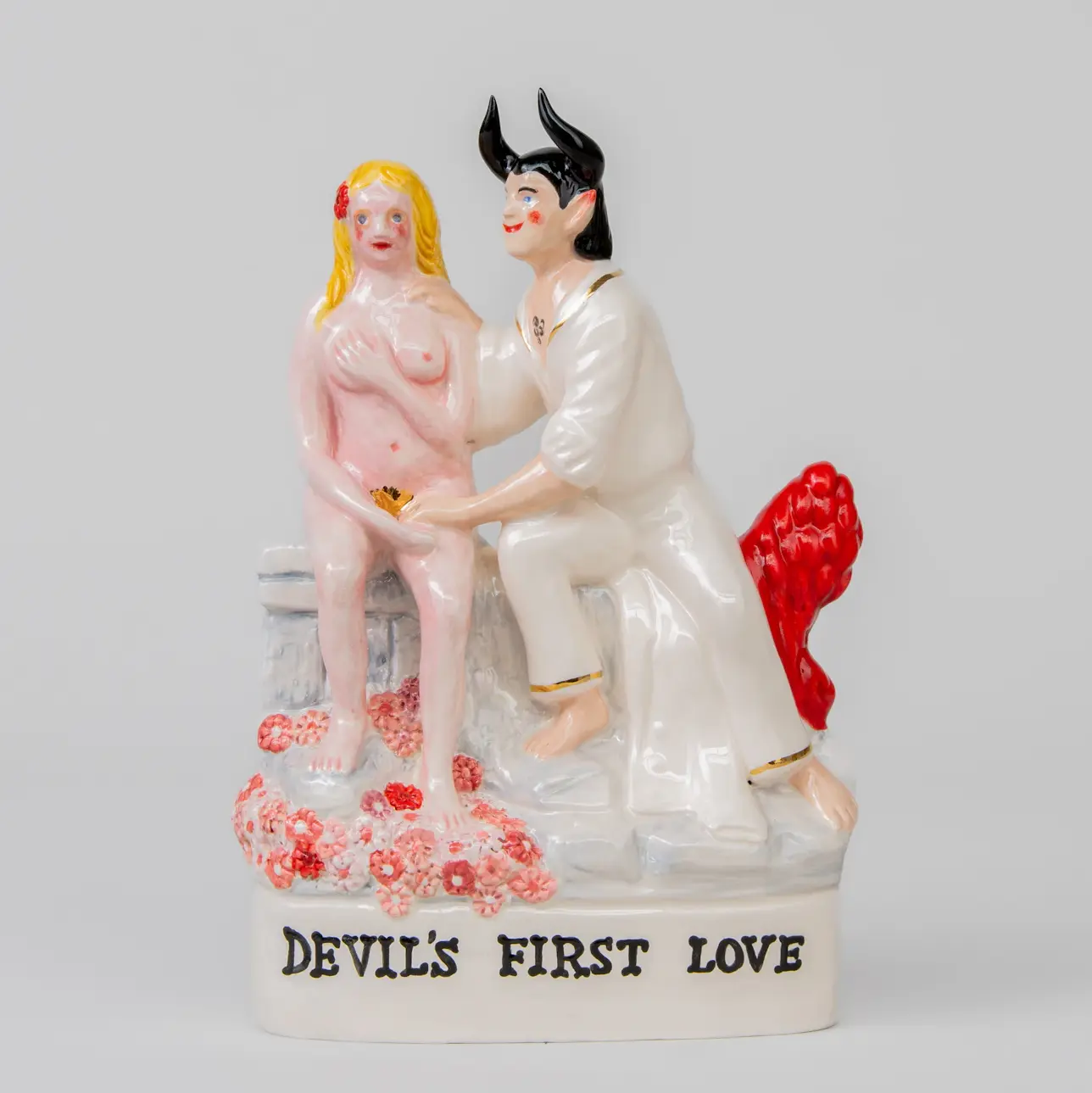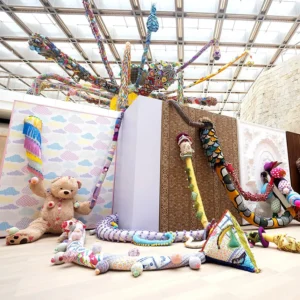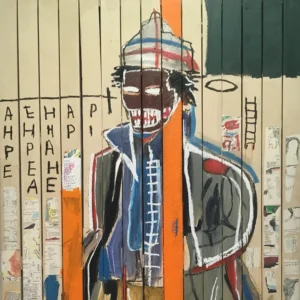Nick Cave, Australian singer and songwriter, is making his debut in visual art. His solo exhibition in Brussels, titled The Devil — A Life, showcases a series of seventeen glazed ceramic figurines portraying the life journey of the Devil from childhood to death.
The Devil, deeply ingrained in Western culture, has been portrayed in various forms throughout history, from scripture and literature to art and folklore. Whether seen as the personification of evil, a fallen angel, or a relatable figure akin to us, the Devil serves as a prism to contemplate concepts of good and evil, liberation, and damnation.
The Devil — A Life presents the Devil as a complex figure, mirroring human experiences. Inspired by Victorian Staffordshire flatback figurines, the series employs a style reminiscent of these historical artifacts, reflecting on themes of forgiveness and moral virtue amidst personal struggles.
The series symbolizes the transition from innocence to experience, echoing Shakespeare’s Seven Ages of Man. Cave’s interest in the Devil stems from his exploration of religion and spirituality, reflecting his own mix of skepticism and belief. Through his work, Cave questions how we interpret the human condition, portraying the Devil as a flawed individual striving for betterment.
Initially, Cave’s pieces stemmed from spill vases inspired by Victorian designs, intended for practical use in transferring flames. He aimed for craftsmanship over artistry to distance himself from the art world, which he viewed skeptically due to his prior experiences in music. Making art felt like a serious endeavor to Cave, contrasting with the notion of casually producing paintings between tours.
Ironically, Cave’s attempt to distance himself from traditional artistry led him to the very realm he sought to avoid. The Staffordshire ceramics, straddling the line between craft and art, captivate both the art world and Cave himself with their unpretentious joy and naive innocence. The shift in focus to ceramics during the pandemic-induced hiatus from touring allowed Cave to reconnect with the tactile act of creation, marking a significant departure from his usual musical and literary endeavors.
Nick Cave embarked on his new artistic journey amidst personal tragedy, notably his mother’s death on the day he began this series of work. Despite considering canceling his plans, encouragement from his wife led him to the studio. This resilience in pursuing creative endeavors despite life’s adversities actually resonates with Cave’s philosophy. Cave’s own experiences with loss, particularly the deaths of his two sons, infuse his interactions with a profound sense of understanding, creating an intimate space where others grappling with grief find solace and connection.
While preparing for his solo exhibition, Nick Cave also released a new single with the Bad Seeds, slated for their upcoming 18th album. The track, “Wild God,” resonates thematically with the ceramics showcased in the exhibition, which depict the various life stages of the devil.
Nick Cave, born in Victoria, was initially drawn to painting. He studied at the Caulfield Institute of Technology before shifting his focus to music, where he gained recognition as the frontman of The Birthday Party and later formed Nick Cave and The Bad Seeds.





